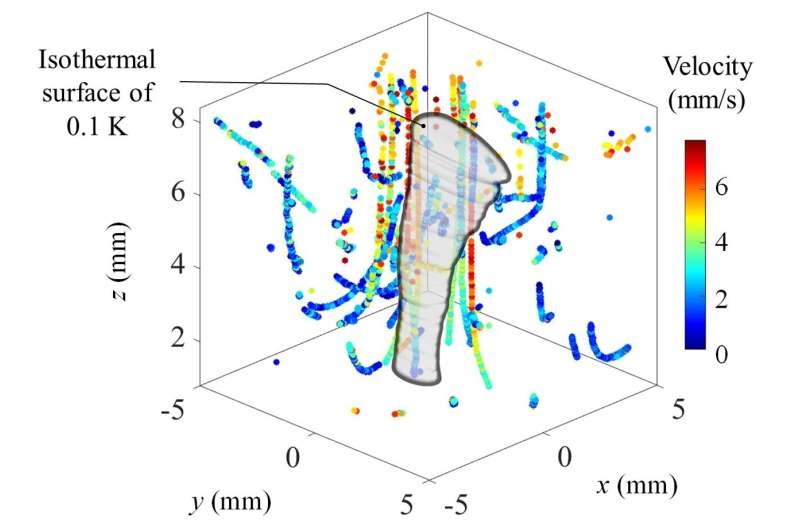Researchers from Tokyo Metropolitan University have developed a groundbreaking method to simultaneously measure both temperature and flow profiles around microscopic convective plumes, paving the way for optimized design of micro-heating and cooling devices.

Untangling the secrets of microscale flows
Understanding the flow and heat transport at such a scale is an essential requirement for designing new generations of microscale heating and cooling devices, which can have applications ranging from liquid-cooled microprocessors to micropumps.
Historically, scientists had to use two different techniques (to make flow and temperature maps) instead of using an integrated one which consequently has reached high-level understanding in the coupling implementation between these two phenomena.
The team from Tokyo Metropolitan University has now developed a breakthrough method that captures temperature and velocity 3D maps jointly, an innovation that paves the way to improve the performance of these micro-scale systems.
The Near-IR Perspective
The breakthrough was enabled with scientists pioneering use of near-infrared (NIR) imaging. The technique uses the temperature-dependent absorption of NIR light by water, enabling the team to produce 3D maps at high resolution for fluid samples.
The method had previously proven useful for imaging small, individual convection plumes — localized heating that causes a vertical circulation. What the researchers were still lacking was a way to map the flow profile simultaneously.
By making novel use of the NIR imaging data, they have managed to generate a method whereby temperature and velocity information can be extracted from one set of measurements without additional lighting or complex setups. This elegant new methodology should provide unprecedented views of how these microscale convective features are born and evolve.
Conclusion
The highly innovative research of the Tokyo Metropolitan University researchers is a big step for miniaturized fluid flows. The research enables the simultaneous measurement of spatial temperature and flow profiles, unlocking new possibilities for the design optimization of next-generation micro-heating and cooling devices with an impact relevant to advancing liquid-cooled microprocessors and advanced thermal management systems.
